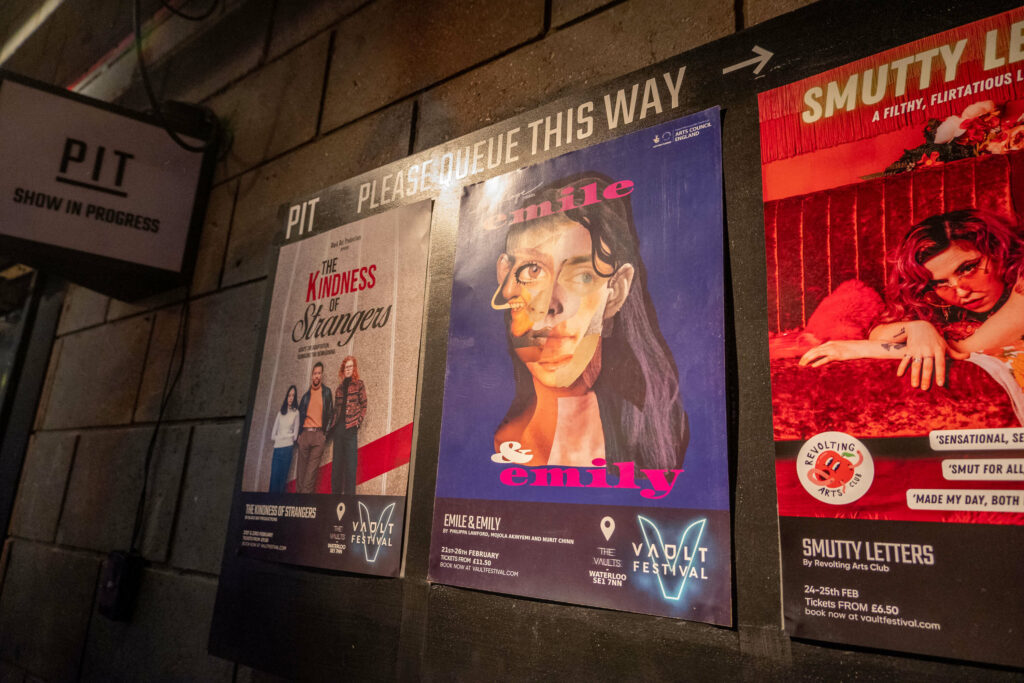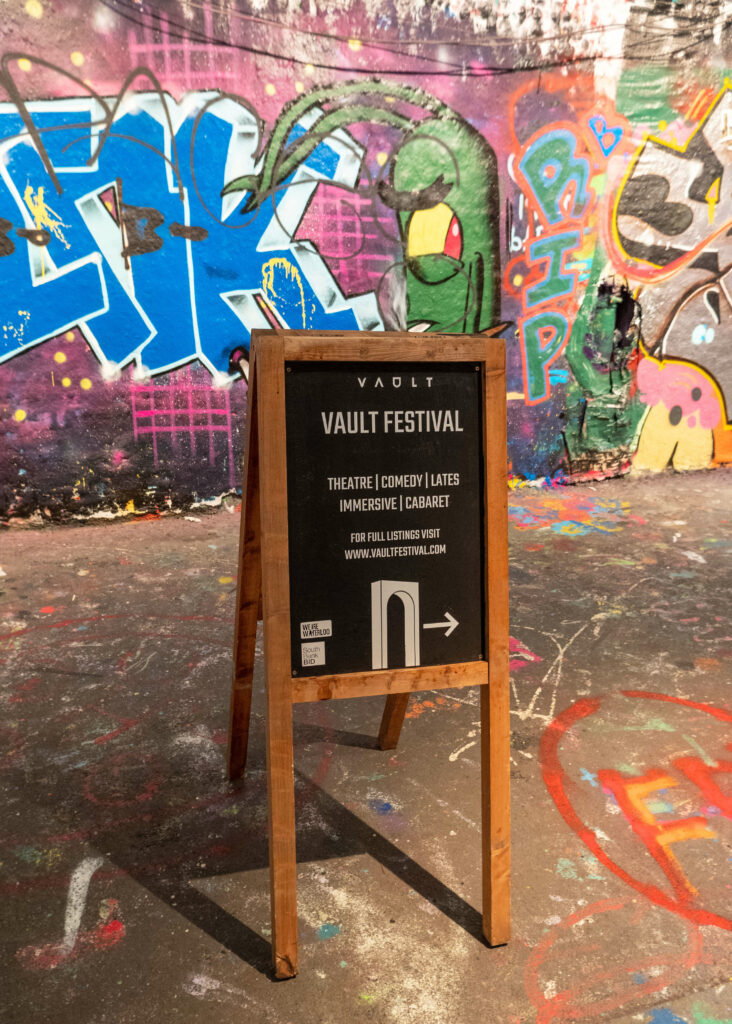★★★
Despite being interested in theatre for years, 2022 was the first year that I really got to experience Fringe or off West End theatre. I spent three nights in Edinburgh and had the opportunity to see a variety of productions at intimate venues across the city. VAULT Festival is London’s very own Fringe festival and it has been organised in The Vaults beneath Waterloo Station since 2012. Providing performance space to emerging production companies, visitors can purchase tickets for as little as £13.00 and see multiple shows in an evening, given the short format of the pieces.

Back in November I had the opportunity to review IKARIA: Tightrope Theatre’s award nominated play covering themes of mental health, personal struggle and the impact it has on loved ones. The company’s latest venture ‘Emile and Emily’ is being showcased as part of the London festival and it is a collaborative drama co-written by Philippa Lawford, Mojola Akinyemi and Nurit Chinn. This week I was thrilled to be invited to review the show and ultimately visit VAULT for the first time.
Format and background
Named after the main characters, the play revolves around three different versions of Emile and Emily. Each pairing is confined to a single twenty minute act and the different relationships and character dynamics are explored in this time. As a collective multi-act piece, the individual stories are linked through the consistent names, repetition of phrases and the use of straight talking characters.
Covering topics such as a loss of self and identity, each of the Emiles and Emily’s reflect on the events of their lives thus far. Themes of anger, class, sexuality and grief are covered through spoken word, crafted in such a way that you can’t help but feel you are being exposed to some of the characters’ innermost thoughts. To balance this there is also plenty of dark humour included in the piece, providing space for the audience to pause for laughter during the action.

Writing and dialogue
With a simple set featuring two chairs and a few significant props, dialogue is the focus of the play and the conversations between the characters are the sole drivers of the narrative. It is how the separate acts interlink and the piece can be interpreted as a whole.
Although the repetition of words has been utilised to provide links between the stories, with the amount of speech onstage it was quite difficult to pick up on all of the similarities. Perhaps this could be made clearer as it is so easy to get swept up in the emotion and drama of the piece and miss the attention to detail within the writing. This would ultimately help unite the three acts.

Tension, drama and humour
Tempo is used to create drama and generate humour within the production, but the different acts don’t follow the same artistic style. Primarily noticeable in the middle scene where flight attendant Emily (Mollie Monkton) reels off her problems to colleague Emile at a lightning pace, the atmosphere on stage is chaotic and Emily is clearly unsettled. The speed of the dialogue makes the ordeal quite funny and the far calmer Emile (David Matthews) enhances this humour through his charismatic reactions. Counteracting the manic behaviour with much slower responses, Emile diffuses some of the drama on stage and helps his colleague through the flight. There are also several pauses for cabin sounds and lighting changes throughout the fictional flight, further altering the tempo. I really enjoyed the scenes’ variety of pace, but felt the approach needed to be carried through to other areas of the production to have the greatest impact.

Character relationships
At the start of the show Emile (Isiah St Jean) and Emily (Francesca Eldred) are sharing a flat in the years after graduation. Their contrasting upbringing is a source of tension within their friendship and they are at loggerheads over their differences in lifestyle. It is a subject that has clearly been buried throughout their long friendship and now the topic has surfaced, everything starts to unravel in front of the audience’s eyes. It is a tense and emotional interaction, fuelled by the energy of the performers on stage.
In the latter acts, the production focuses on the relationships between colleagues and strangers. Act three’s Emile (Adam Mirsky) and Emily (Sara Hazemi) are brought together through grief and as a result, the characters tread on eggshells around each other, unaware how to act given the upsetting circumstance of how they became acquainted. The relationship is distant and miles away from the close friendship of the first act, helping to showcase a variety of relationships within the production.

Thoughts for the future
Emile and Emily is a refreshing and relatable insight into human relationships, with an element of humour thrown in thanks to the memorable characters and writing. The stripped back drama and sparse set does work in The Vaults location, but in terms of what comes next for the production, I would be interested to see how the play could potentially evolve and utilise a wider variety of props, lighting and sound effects in illustrating the parallel narratives. It is difficult to visually see the connections between the acts at present. Staging alterations as well as greater clarity around the related dialogue would help make the piece more cohesive.

Thanks for reading my blog today.
Love Kat xxxx
*My ticket for Emile and Emily was gifted in exchange for a review of the production.

Comments